Understanding the TFL Strikes: What They Mean and Why They Happen
Table of Contents
Introduction
The TFL strikes have been a big topic in the news recently. Many people are wondering why the TFL strikes are happening and how it affects their daily lives. If you live in or around London, you might have already faced some problems because of these strikes.
In this post, we will talk about what TFL strikes are, why they happen, and what it means for people who depend on public transport. Strikes can be confusing, but this guide will make it easy to understand, even for beginners.
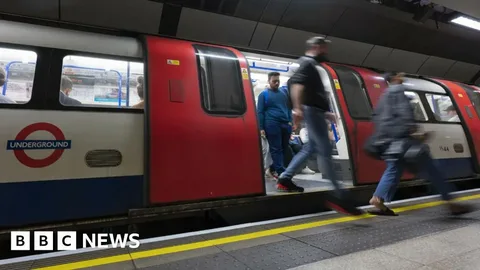
What Are TFL Strikes and Why Do They Happen?
TFL strikes happen when the workers of Transport for London (TFL) stop working to protest against issues they face at work. This can cause a lot of problems for people who rely on public transport like buses and trains. The main reasons behind TFL strikes are disagreements over pay, job conditions, or job security. When workers feel they are not being treated fairly, they might strike to make their voices heard.
One of the most common causes of TFL strikes is the issue of pay. Workers might feel that they are not being paid enough for the hard work they do. They may also believe that their wages do not match the rising cost of living in London. When negotiations between the workers and their employers do not go well, a strike may be called as a last resort to push for better pay.
Another reason for TFL strikes is job security. Workers worry that their jobs might be at risk due to cuts or changes in the company. They fear that if the company decides to reduce staff or make changes, they could lose their jobs. This can cause a lot of stress, and sometimes the workers feel that striking is the only way to protect their jobs.
Work conditions can also lead to strikes. If workers feel that their work environment is unsafe or unfair, they may decide to stop working in protest. They want to make sure that their workplaces follow safety rules and that they are treated with respect. Strikes are a way to show the company that they need to make changes.
Overall, TFL strikes happen when workers believe that something important needs to change. They strike to get the attention of their bosses and to show how important their jobs are to the city. While strikes can be inconvenient for people, they are an important tool for workers to fight for their rights.
How Do TFL Strikes Affect Daily Commuters?
TFL strikes can cause major problems for daily commuters who rely on public transport to get around. When services like buses, trains, or the Underground stop running, people often struggle to reach their destinations on time. Many commuters may be late for work, school, or important appointments because they have to find other ways to travel. This can lead to stress and frustration as people try to adjust their daily routines.
One of the biggest effects of TFL strikes is overcrowding on other forms of transport. When buses or trains are not running, more people turn to cars, taxis, or bicycles. This makes roads busier and can lead to traffic jams. For those who still use public transport, such as the limited services that remain during a strike, the trains and buses that do run are often packed, making the journey uncomfortable.
In addition to affecting commuters’ daily schedules, TFL strikes can also increase the cost of travel. With fewer public transport options, people might need to spend more money on alternative forms of transport like taxis or rideshare services. For some, these extra costs can add up quickly, especially if the strikes last for several days.
Businesses also feel the effects of TFL strikes. If employees cannot get to work on time or at all, it can lead to lost productivity. Some businesses might have to close or reduce their services during strikes, especially if a large part of their staff relies on public transport. This can hurt both small and large companies and even affect customers who depend on those businesses.
Overall, TFL strikes have a wide impact on daily commuters, businesses, and the city as a whole. From delays and crowded roads to extra travel costs, these strikes disrupt normal routines and create challenges for everyone involved.
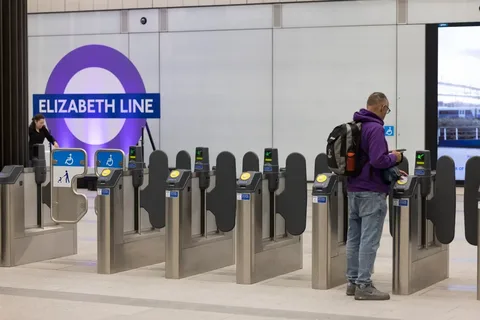
The Reasons Behind TFL Strikes: Understanding the Causes
TFL strikes happen for many reasons, but they mostly come from disagreements between workers and their employers. The workers, who include bus drivers, train operators, and station staff, often strike when they feel that they are not being treated fairly. One of the main reasons for TFL strikes is pay. Workers believe that their wages do not match the hard work they do or the cost of living in a city like London, so they push for better pay during strikes.
Another common reason for TFL strikes is job security. With changes in how the transport system works, workers sometimes worry that their jobs may be at risk. They may fear that TFL plans to cut staff or make changes that could result in them losing their jobs. Strikes allow them to show their concerns about job cuts and push for more stability in their employment.
Work conditions are also a major cause of strikes. Workers may feel that the environment they work in is unsafe or unfair. For example, they might be unhappy with long working hours, poor safety measures, or a lack of proper breaks. Strikes give them a way to demand better conditions so that their jobs are safer and more comfortable.
Additionally, pension changes can lead to strikes. Many TFL workers have pensions that they rely on for their future, but sometimes their employers want to change these pension plans in ways that workers do not agree with. If they feel that their pensions are at risk, workers may strike to protect their financial security in the long term.
In summary, TFL strikes happen because of issues with pay, job security, work conditions, and pensions. Workers feel that striking is a way to get their voices heard and push for the changes they need. Although strikes can cause disruptions, they are an important tool for workers to stand up for their rights.
How Long Do TFL Strikes Usually Last?
TFL strikes can vary in length depending on the reasons behind the strike and how quickly the issues are resolved. Some strikes last only for a day, while others can stretch over several days or even weeks. One-day strikes are quite common and are often used to send a strong message to TFL management without causing too much disruption. These shorter strikes can still have a big impact on commuters, even if they are over in just 24 hours.
Sometimes, TFL strikes last for multiple days in a row. These longer strikes happen when the disagreements between workers and management are more serious, or when negotiations to solve the problem take more time. During these strikes, workers may stop working for a few days, return to work, and then strike again if no solution is found. This kind of strike pattern can make it harder for people to plan their journeys.
In some cases, TFL strikes are part of a series of smaller strikes spread over weeks or months. Instead of one long strike, workers may choose to strike on certain days while continuing to work on others. This “stop-start” approach is designed to keep the pressure on TFL without causing a complete shutdown of services. However, it can still be frustrating for commuters, as they might not know when the next strike will happen.
The length of a TFL strike also depends on how quickly both sides are willing to negotiate. If TFL management and the workers’ unions can come to an agreement quickly, the strike may only last a short time. However, if both sides are far apart in their demands, the strike could drag on until a compromise is reached. In some cases, strikes end when the government or other organizations step in to help resolve the conflict.
Overall, the duration of TFL strikes can vary, but whether they last for one day or several, they always cause disruption to daily life in London. How long a strike lasts depends on the issues involved and how fast an agreement can be made between the workers and TFL management.
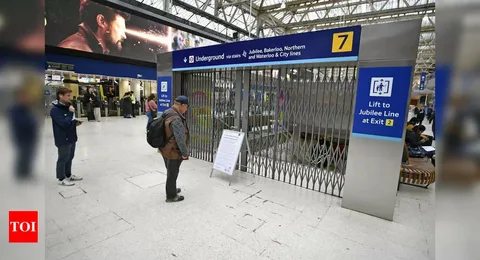
What to Do During TFL Strikes: Tips for Commuters
When TFL strikes happen, it can be challenging for commuters who rely on public transport to get around. However, there are a few things you can do to make your journey easier and less stressful. One of the first things you should do is check for any updates or information about the strike. TFL often provides updates on which services are affected and which routes are still running, so staying informed will help you plan ahead.
If your usual route is affected, consider using alternative transport options. Buses might still be running, but they may be more crowded than usual. You can also think about cycling, walking, or using a carpool service if possible. Apps like Google Maps or Citymapper can help you find the quickest and least crowded routes, including walking or bike options. These apps can even show you how long it will take to walk or bike to your destination.
For those who live a bit further from their destination, consider using rideshare services like Uber or taxis. Although these options may cost more, they could save you time and help avoid the crowded streets or long waits at bus stops. However, be aware that rideshare services might also experience higher demand during a strike, so prices could be higher than usual. It’s a good idea to plan ahead for these potential extra costs.
If you can’t avoid being delayed, make sure to give yourself extra time to reach your destination. Plan to leave earlier than usual to avoid the stress of being late. This is especially important for commuters who need to get to work or appointments on time. It’s also helpful to stay flexible and keep an open mind about different ways to travel, as the best option might change depending on how crowded or delayed different services are.
In summary, staying informed, planning alternative routes, considering rideshares, and allowing extra time are the best tips for commuters during TFL strikes. While these disruptions can be inconvenient, being prepared can help you navigate through the challenges and get to your destination with less hassle.
TFL Strikes: How They Impact London’s Economy
TFL strikes can have a significant impact on London’s economy, affecting not only commuters but also businesses, workers, and the overall productivity of the city. Public transport plays a huge role in London’s economy, as many people rely on it to get to work, school, or other activities. When TFL services stop running due to strikes, it creates disruptions that ripple through the economy, leading to lost productivity and financial challenges for many.
One of the main ways TFL strikes affect the economy is by reducing the number of people able to get to work. For many businesses in London, especially those in industries like retail, hospitality, and services, workers rely on public transport to show up on time. When TFL strikes happen, some employees may be unable to reach their jobs, leading to reduced workforce numbers and lower output. This can affect not just the businesses, but also the local economy, as these businesses generate significant revenue.
Another effect of TFL strikes is the increased costs for businesses and commuters. During strikes, people often have to turn to alternative transport, such as taxis, rideshares, or even driving their own cars. These options are often more expensive than public transport, leading to higher costs for both workers and businesses. The added expenses can be a burden, especially for those who rely on affordable transport options to manage their daily expenses.
Strikes also hurt London’s tourism industry. Tourists who rely on TFL services to explore the city may find it difficult to navigate London’s famous landmarks, museums, and attractions. Reduced public transport can deter people from visiting, leading to a drop in tourism revenue. This impacts not only the transport system but also hotels, restaurants, and local attractions that depend on visitors to support their business.
In the long term, if TFL strikes are prolonged, the economy can face even greater setbacks. Businesses may be forced to adjust or even close temporarily, and the city’s overall efficiency and reputation could suffer. While strikes are a way for workers to voice their concerns, the economic consequences highlight how crucial public transport is to keeping the city running smoothly.
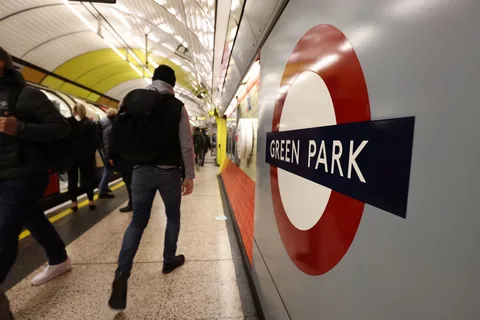
Can TFL Strikes Be Avoided? Solutions for the Future
TFL strikes are a result of unresolved issues between workers and management, but there are ways to prevent them from happening in the future. One possible solution is for Transport for London to improve communication with its workers. By having regular meetings and open discussions about issues like pay, working conditions, and job security, both sides could address concerns before they escalate into a strike. Creating a more transparent and collaborative environment may help to find common ground and avoid conflicts.
Another approach is to offer better job benefits and fair pay to TFL workers. Many strikes happen because workers feel they are not compensated enough for their hard work. If TFL can improve pay packages and ensure that employees receive fair treatment, workers may be less likely to resort to striking. Providing workers with more job security and addressing concerns about pension plans could also prevent future strikes, as these issues are often the cause of tension.
Using technology to improve operations and reduce the need for staff cuts can also help. TFL should look for ways to make the transport system more efficient without affecting jobs. For example, investing in automated systems or advanced technology could streamline operations, ensuring that staff are not overworked or threatened by job cuts. Keeping workers involved in the changes and offering them training for new technologies can help create a sense of job security while improving the service for commuters.
Mediation and third-party negotiation are other solutions that can help prevent strikes. Sometimes, when both sides cannot agree, bringing in a neutral party to help mediate can speed up the resolution process. These third-party negotiators can help find compromises and prevent long, disruptive strikes. By encouraging mediation, TFL and its workers may be able to avoid the need for strikes and find solutions that benefit both sides.
In conclusion, while TFL strikes may not be entirely avoidable, there are many ways to reduce their frequency and impact. By improving communication, offering fair pay and job security, embracing new technologies, and using mediation, TFL can help prevent conflicts from escalating into strikes. With these solutions, both workers and commuters can benefit from a more stable and efficient public transport system.
A Timeline of Recent TFL Strikes
TFL strikes have occurred multiple times in recent years, each one affecting London’s public transport network and daily commuters. Understanding the timeline of recent TFL strikes can help provide insight into why they happen and how frequently they disrupt the city. These strikes often stem from ongoing disputes over pay, working conditions, and job security, and they have taken place at various times throughout the past few years.
In early 2022, a major TFL strike took place in March, lasting for several days and affecting both the London Underground and other services. The strike was called by unions representing TFL workers, including the RMT (Rail, Maritime, and Transport) Union, which protested against planned job cuts and changes to workers’ pensions. The strike caused widespread disruption, with millions of commuters having to find alternative ways to travel across the city.
Later in June 2022, another significant TFL strike occurred, this time affecting the London Underground once again. Workers walked out over concerns about pension changes and job losses, which unions argued would negatively affect their members’ financial security. This strike was part of a larger wave of industrial action happening across the UK’s transport sector at the time, as workers in various industries fought for better pay and conditions amid rising living costs.
In November 2022, TFL workers staged another strike, this time during the busy pre-Christmas shopping period. The strike had a major impact on London’s economy, with many businesses reporting lower footfall due to the lack of public transport. The strikes were once again tied to disagreements over pensions and staffing levels. Commuters faced long delays, and alternative transport options like buses and taxis were overcrowded.
Most recently, in 2023, a series of smaller, rolling TFL strikes took place, with unions staging walkouts on specific days across different parts of the network. These strikes were part of ongoing disputes about job security and working conditions, but they were organized in such a way that they did not completely shut down the transport network. Instead, they caused periodic disruptions that still created challenges for commuters, but allowed some services to continue running on non-strike days.
The timeline of recent TFL strikes shows how regular these disruptions have become, as workers continue to fight for better conditions. With each strike, both TFL and the unions aim to resolve the underlying issues, but it’s clear that ongoing negotiations will be needed to prevent further action in the future.
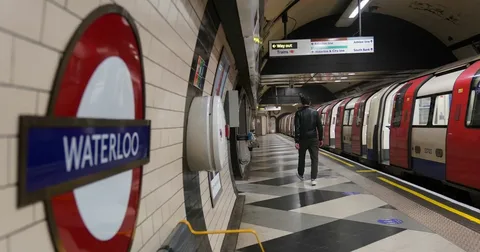
TFL Strikes and Workers’ Rights: The Bigger Picture
TFL strikes are not just about transport disruptions; they are part of a broader conversation about workers’ rights and fair treatment. The workers who run London’s public transport network often go on strike to fight for better pay, working conditions, and job security. These strikes highlight the need to protect the rights of employees and ensure that their concerns are heard and addressed. Understanding the bigger picture behind TFL strikes helps us see the importance of workers’ rights in a modern society.
One of the key reasons for TFL strikes is pay. Workers often feel that their wages do not match the level of responsibility and hard work required to keep London moving. Many transport workers put in long hours, working early mornings, late nights, and weekends. Strikes give these workers a platform to demand better compensation for their time and effort. Fair pay is a fundamental part of workers’ rights, and TFL employees strike to ensure that they receive wages that reflect their contributions to the city.
Job security is another major issue that leads to strikes. Many TFL workers fear losing their jobs due to automation, staff cuts, or changes in management plans. When workers feel uncertain about their future, strikes become a way to protect their positions and ensure that they are not unfairly replaced or downsized. By striking, TFL employees push for guarantees of job security, which is essential for their livelihoods and peace of mind.
In addition to pay and job security, working conditions are a frequent cause of TFL strikes. Workers sometimes face stressful environments, understaffing, and safety concerns. Strikes allow employees to raise these issues and demand better working conditions. This includes more staff support, improved safety measures, and reasonable work schedules. By standing up for their rights, TFL workers aim to create a better and safer working environment for everyone.
Ultimately, TFL strikes shed light on the larger issue of workers’ rights in the UK and around the world. These strikes show that when workers are treated unfairly, they have the right to take action and demand change. While strikes may cause inconvenience for commuters, they are a powerful tool for workers to protect their rights and ensure fair treatment. In the long run, finding solutions to these issues benefits both workers and the public, creating a more equitable and functional society.
Public Reactions to TFL Strikes: What Are People Saying?
Public reactions to TFL strikes are mixed, with some people expressing frustration over the disruptions, while others show support for the workers’ cause. For many Londoners, TFL strikes can make daily commuting a challenge, leading to long delays, overcrowded buses, and the need to find alternative ways to get around the city. People who rely heavily on public transport for work, school, or appointments often voice their frustration on social media and in interviews, as the strikes can create major inconveniences.
On the other hand, some members of the public are sympathetic to the reasons behind the strikes. Many people understand that TFL workers are fighting for better pay, job security, and improved working conditions. These individuals feel that workers have the right to strike when their concerns are not addressed by management. Supporters of the strikes often point out that transport workers are essential to keeping London running smoothly, and they deserve fair compensation and treatment in return.
Commuters who are less impacted by the strikes or who have flexible work arrangements may have a more neutral stance. Some people adjust their travel plans or work from home during strikes, so they are not as affected by the disruptions. While they may find the strikes inconvenient, they are often more understanding of the workers’ position. For these individuals, the strikes are seen as part of a necessary negotiation process between workers and TFL.
In the business community, reactions to TFL strikes tend to be more negative. Businesses, especially those in central London, often suffer losses during strikes because employees and customers cannot easily travel to their locations. Retail shops, restaurants, and other service industries report reduced foot traffic on strike days, which can lead to financial challenges. Many business owners call for quicker resolutions to disputes to minimize the impact on their operations.
Overall, public reactions to TFL strikes vary depending on how much people are personally affected and how they view workers’ rights. While frustration is common among commuters, there is also significant support for the workers and their demands for fair treatment. The conversation around TFL strikes reflects a broader debate about balancing the needs of workers with the realities of public service disruptions.
How to Stay Updated on Future TFL Strikes
Staying informed about future TFL strikes is essential for commuters and anyone who relies on London’s public transport system. There are many ways to keep track of upcoming strikes so you can plan your travel and avoid disruptions. One of the best ways to stay updated is by regularly checking the official Transport for London (TFL) website. TFL provides up-to-date information about any planned strikes, service changes, and alternative transport options. Their website is a reliable source for real-time updates.
Another useful method is to follow TFL’s social media accounts. Platforms like Twitter, Facebook, and Instagram are often used to announce strikes and provide updates throughout the day. You can receive notifications on your phone about any new developments, allowing you to adjust your travel plans quickly. Social media is especially helpful during ongoing strikes when conditions can change rapidly, such as services resuming or further walkouts being announced.
Many news outlets also report on TFL strikes. National and local news websites, TV channels, and radio stations provide regular updates about strikes and their impact on commuters. Popular news platforms like the BBC, The Guardian, and The Evening Standard often cover TFL strikes in detail, giving you a broader view of the situation. Signing up for email newsletters from these news outlets or using their apps can help ensure you don’t miss important information about future strikes.
Mobile apps designed for transport updates, such as Citymapper or Google Maps, can also be valuable tools. These apps alert users about any disruptions to public transport, including TFL strikes. They often suggest alternative routes, helping you find the fastest way to your destination even when a strike is in effect. With notifications and real-time updates, these apps are handy for anyone navigating the city during a strike.
In addition to these resources, joining a community of commuters on social media or online forums can be helpful. Many Londoners share their experiences and tips during TFL strikes, offering advice on the best routes, bus services, or even walking paths to take. By staying connected with other commuters, you can gain insights and updates that may not be covered by official sources. Overall, using a combination of official TFL updates, news sources, mobile apps, and social networks will keep you well-prepared for any future strikes.
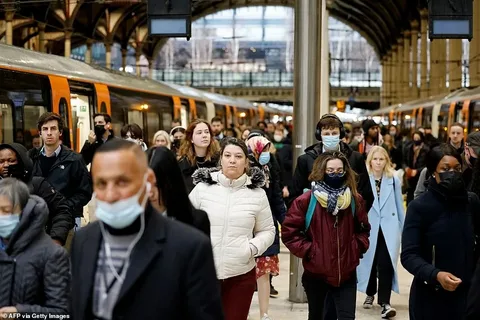
TFL Strikes and the Future of London’s Public Transport
TFL strikes raise important questions about the future of London’s public transport system. As these strikes continue to disrupt daily commuting, many wonder what steps can be taken to improve the situation and prevent further walkouts. The strikes often stem from issues such as pay, job security, and working conditions, and these concerns need to be addressed to ensure a more stable and reliable transport network for the city’s future.
One of the main challenges facing London’s public transport system is funding. TFL has faced financial difficulties in recent years, especially after the COVID-19 pandemic, which reduced passenger numbers and revenue. With limited funds, it becomes harder to meet the demands of both workers and the public. Finding sustainable funding solutions is essential for improving wages, maintaining services, and ensuring job security for TFL staff. If funding issues are not resolved, strikes may continue to affect London’s transport in the future.
Automation and technology also play a role in the future of TFL. While some argue that automation could reduce the need for human workers and prevent strikes, this raises concerns about job losses. Striking a balance between using technology to improve efficiency and preserving jobs is a key issue that TFL must consider. If automation is introduced without protecting workers’ rights, it could lead to even more strikes and unrest in the transport sector.
The future of public transport in London also depends on improving communication and negotiation between workers and management. Strikes often happen when workers feel that their voices are not being heard, and better dialogue could help prevent disputes before they escalate. Regular meetings between unions and TFL management, as well as transparent discussions about pay and working conditions, could lead to long-term solutions that benefit both parties. Finding common ground is crucial to creating a more peaceful working environment for everyone involved.
Ultimately, the future of TFL and London’s public transport system relies on cooperation and forward-thinking solutions. While strikes may continue to happen in the short term, addressing the root causes of these disputes can create a more stable and efficient transport network for the city. By investing in both workers and technology, and improving communication, London can move toward a future where TFL strikes are less frequent, and public transport is reliable for all.
Conclusion
In the end, TFL strikes are a big part of London’s transport system. They can cause problems for people traveling to work, school, or anywhere around the city. But strikes also show that workers have real concerns that need to be fixed, like pay and job security. By listening to workers and finding better solutions, maybe the number of strikes can go down in the future.
The future of TFL depends on working together. If both sides—workers and TFL leaders—talk more and try to understand each other, things can improve. Londoners want a public transport system that runs smoothly, and solving the problems behind the strikes is the best way to make that happen.
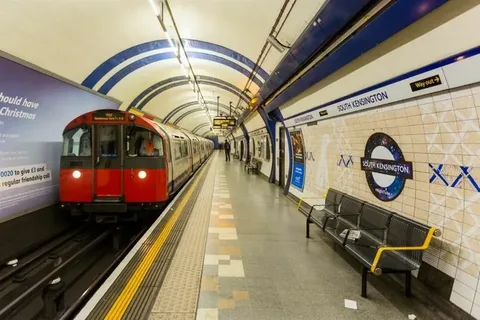

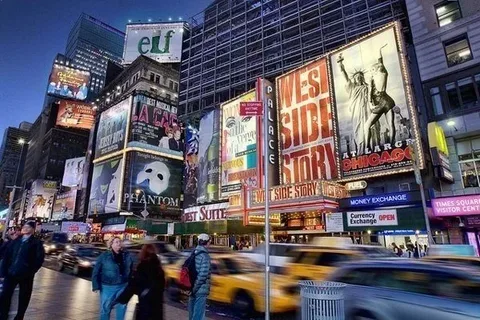











Post Comment